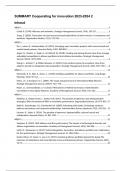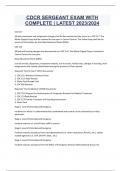Samenvatting
Summary ALL ARTICLES 2024 COOPERATING FOR INNOVATION
This document contains a summary of all articles from 2024 for the course cooperating for innovation. With the useful table of contents you can easily navigate across the different weeks and respective articles.
[Meer zien]





